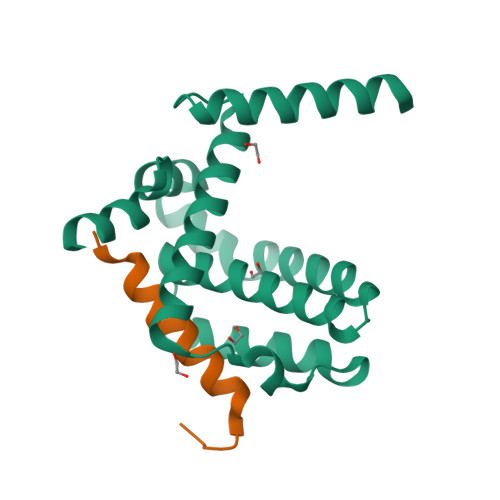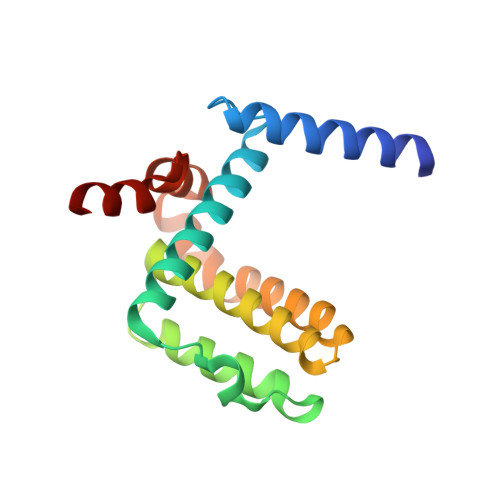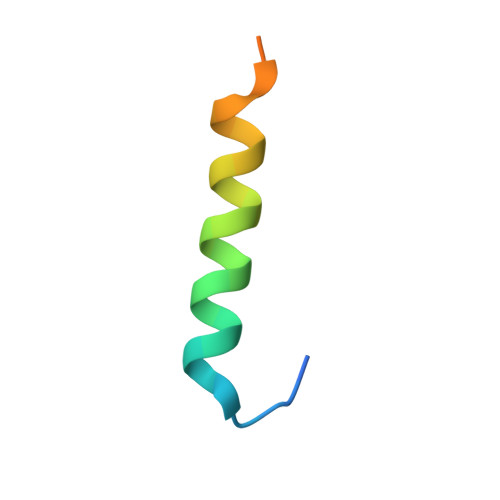Physiological Restraint of Bak by Bcl-Xl is Essential for Cell Survival.
Lee, E.F., Grabow, S., Chappaz, S., Dewson, G., Hockings, C., Kluck, R.M., Gray, D.H., Witkowski, M.T., Evangelista, M., Pettikiriarachchi, A., Bouillet, P., Lane, R.M., Czabotar, P.E., Colman, P.M., Smith, B.J., Kile, B.T., Fairlie, W.D.(2016) Genes Dev 30: 1240
- PubMed: 27198225
- DOI: https://doi.org/10.1101/gad.279414.116
- Primary Citation of Related Structures:
5FMI, 5FMJ, 5FMK - PubMed Abstract:
Due to the myriad interactions between prosurvival and proapoptotic members of the Bcl-2 family of proteins, establishing the mechanisms that regulate the intrinsic apoptotic pathway has proven challenging. Mechanistic insights have primarily been gleaned from in vitro studies because genetic approaches in mammals that produce unambiguous data are difficult to design. Here we describe a mutation in mouse and human Bak that specifically disrupts its interaction with the prosurvival protein Bcl-xL Substitution of Glu75 in mBak (hBAK Q77) for leucine does not affect the three-dimensional structure of Bak or killing activity but reduces its affinity for Bcl-xL via loss of a single hydrogen bond. Using this mutant, we investigated the requirement for physical restraint of Bak by Bcl-xL in apoptotic regulation. In vitro, Bak(Q75L) cells were significantly more sensitive to various apoptotic stimuli. In vivo, loss of Bcl-xL binding to Bak led to significant defects in T-cell and blood platelet survival. Thus, we provide the first definitive in vivo evidence that prosurvival proteins maintain cellular viability by interacting with and inhibiting Bak.
Organizational Affiliation:
The Walter and Eliza Hall Institute of Medical Research, Parkville, Victoria 3052, Australia; Department of Medical Biology, The University of Melbourne, Parkville, Victoria 3010, Australia; Department of Chemistry and Physics, La Trobe Institute for Molecular Science, La Trobe University, Bundoora, Victoria 3086, Australia; Olivia Newton-John Cancer Research Institute, Heidelberg, Victoria 3084, Australia; School of Cancer Medicine, La Trobe University, Melbourne, Victoria 3084, Australia.




















